Viewing search results for "Winston Salem African American Archive"
View All Posts
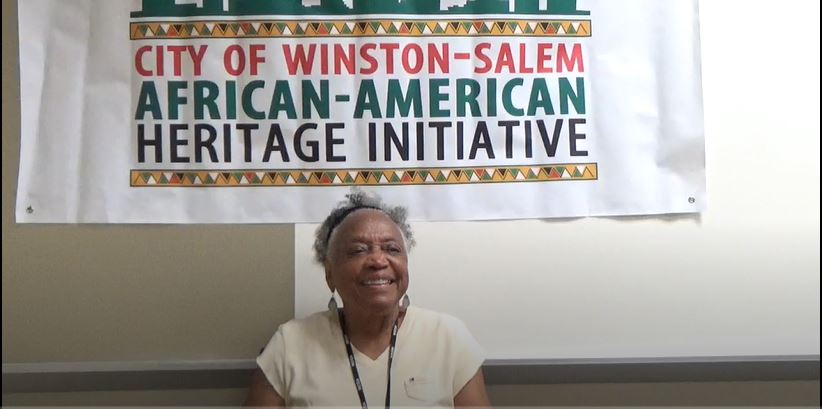
Screenshot from the Evelyn Abrams Terry Oral History Interview [June 18, 2022]
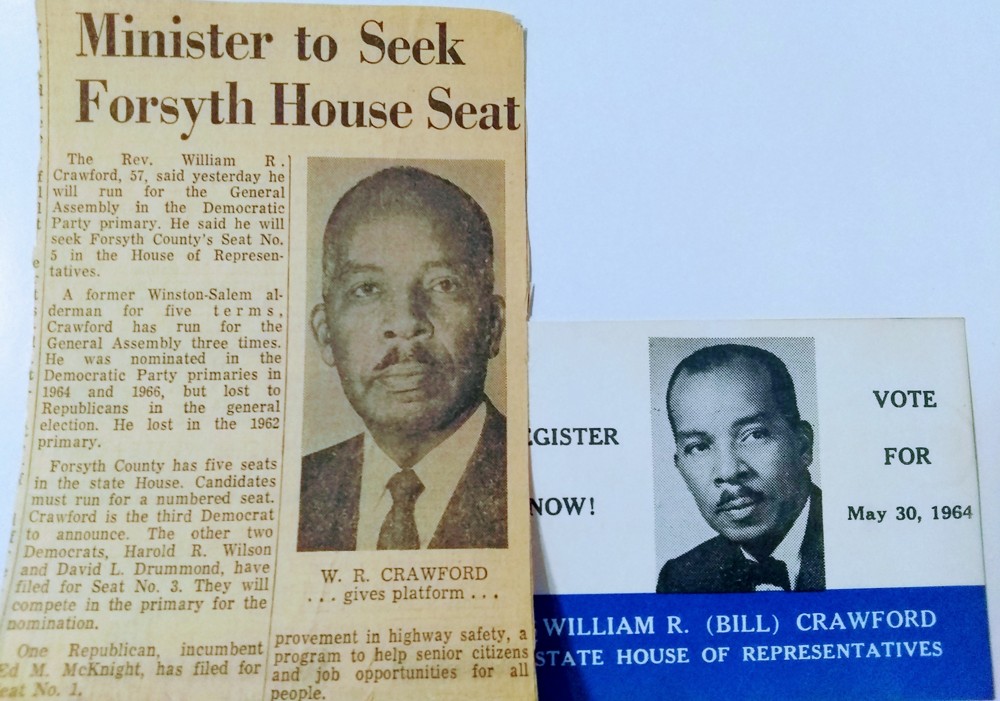
William R. Crawford 1964 NC Legislature Campaign Materials.
All of the materials collected so far can be viewed on the Initiative’s DigitalNC page here. If you are interested in submitting materials to the Initiative, check out the city’s website.
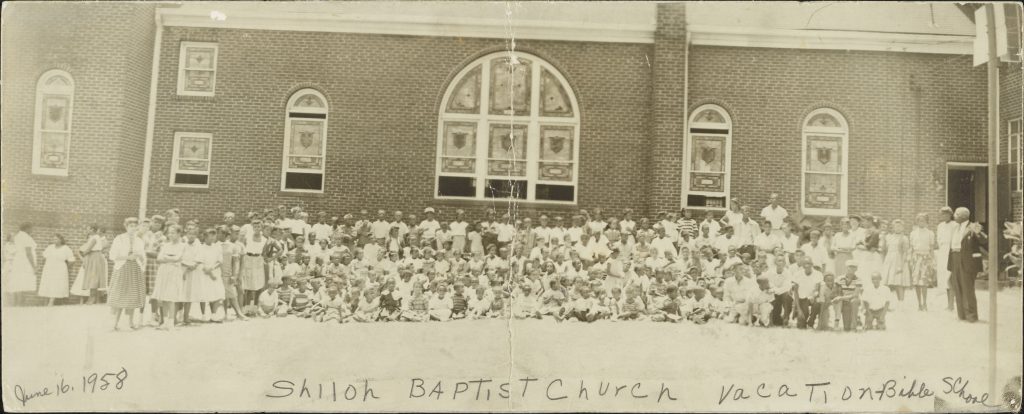
A group photograph taken at Shiloh Baptist Church’s Vacation Bible School. June 1958.
We have added materials that capture some of Winston Salem’s rich African-American history from 1930 to 1990, courtesy of the Winston Salem African American Archive.
Included in this batch are several editions of The Columbian, the student newspaper for Columbian Heights High School, and articles from other local papers highlighting notable community members and events.
One such community member, Joseph Bradshaw was a veteran, social worker, educator and local historian, committed to preserving Black history in the city and beyond. Other articles detail firsts in Winston Salem’s African-American community: William Samel Scales opened the first Black-owned bonding agency and later served as the president of Forsyth Savings and Trust. Naomi McLean opened the first Black business and stenographer school in Winston Salem. Carl Matthews began the Winston-Salem sit-in on February 8, 1960. Other articles detail the 1947 Local 22 Tobacco Workers strike at the R.J. Reynolds Factory.
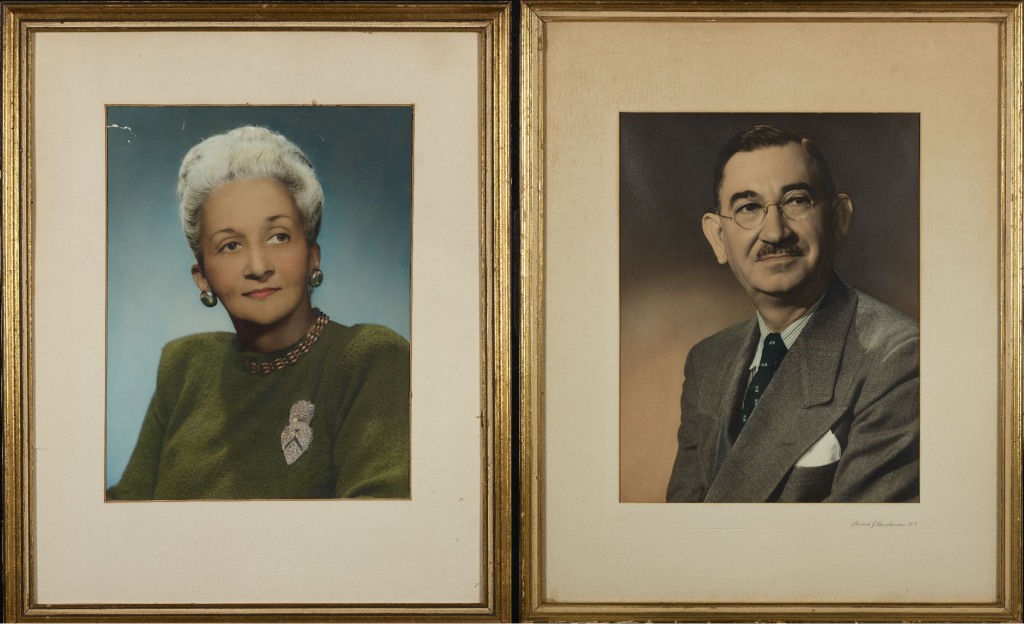
Color portraits of Mrs. Mary Hairston and Dr. Rufus S. Hairston. Dr. Hairston was Winston Salem’s first African-American pharmacist.
Also included in these materials are color portraits of Dr. and Mrs. Rufus S. Hairston and a scrapbook of materials collected by Mrs. Hairston. The Hairstons were both alumni of Slater Industrial Academy, now known as Winston Salem State University, and active members of their community. Dr. Hairston was Winston Salem’s first African-American pharmacist, an alumnus of Shaw University, president of the National Pharmaceutical Association, and was appointed WSSU’s first alumni board of trustee member. Mrs. Hairston served as one of the first presidents of the Winston Salem Chapter of Moles, a national professional organization of women of color, and was a founding member of the Winston Salem Chapter of The Links, Inc. She was also involved in the development of Winston Salem’s first library for African-Americans and later worked in the WSSU library.
To learn more about the Winston Salem African American Archive, visit their website or partner page.
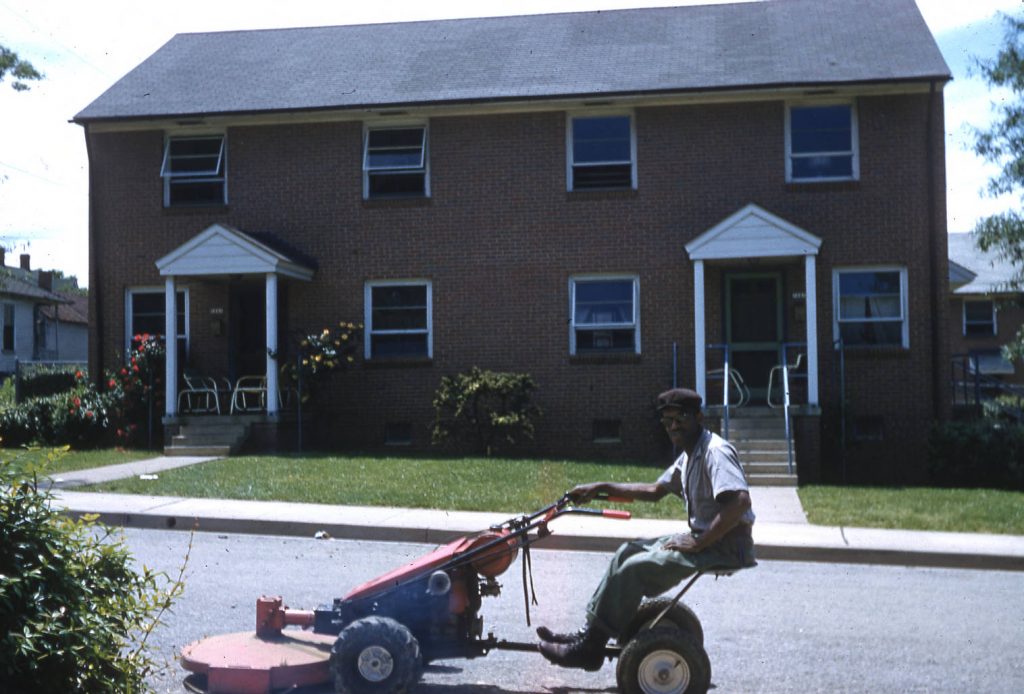
Man on a lawnmower in front of homes on Cleveland Ave., 1958
Back in May, when the NCDHC staff went to Winston-Salem to do a day of on-site scanning with the Winston Salem African American Archive, the bulk of our scanning was over 200 slides that showed construction of public housing units built by the Housing Authority of Winston-Salem, as well as some slides that showed the areas of “urban decay” that were replaced with these developments in initial urban renewal efforts in the city that started in the late 1940s. The housing complexes photographed include Cleveland Avenue homes (built in the mid 1950s as one of Winston-Salem’s first public housing communities), Sunrise Towers, Crystal Towers, the 14th Street Community Center, Northwood Estates, and the Castle Heights neighborhood.
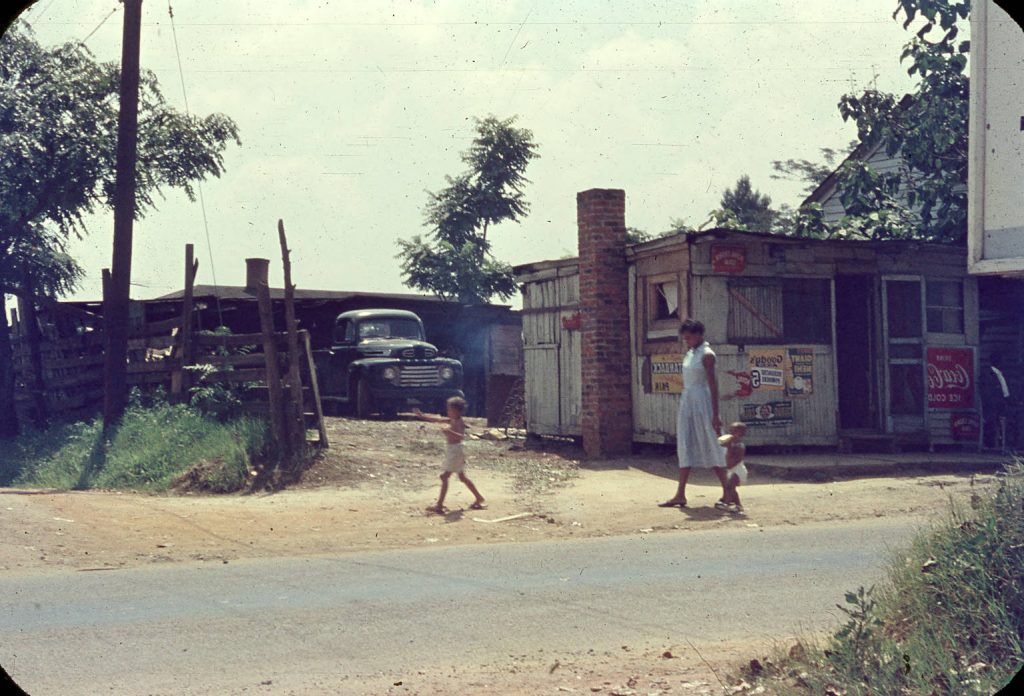
Woman walking with two children in Winston-Salem. The slide was included in a section that stated “conditions before redevelopment”. Ca. 1950
See all the slides we scanned from the WSAAA here. To learn more about the archive, visit their website.
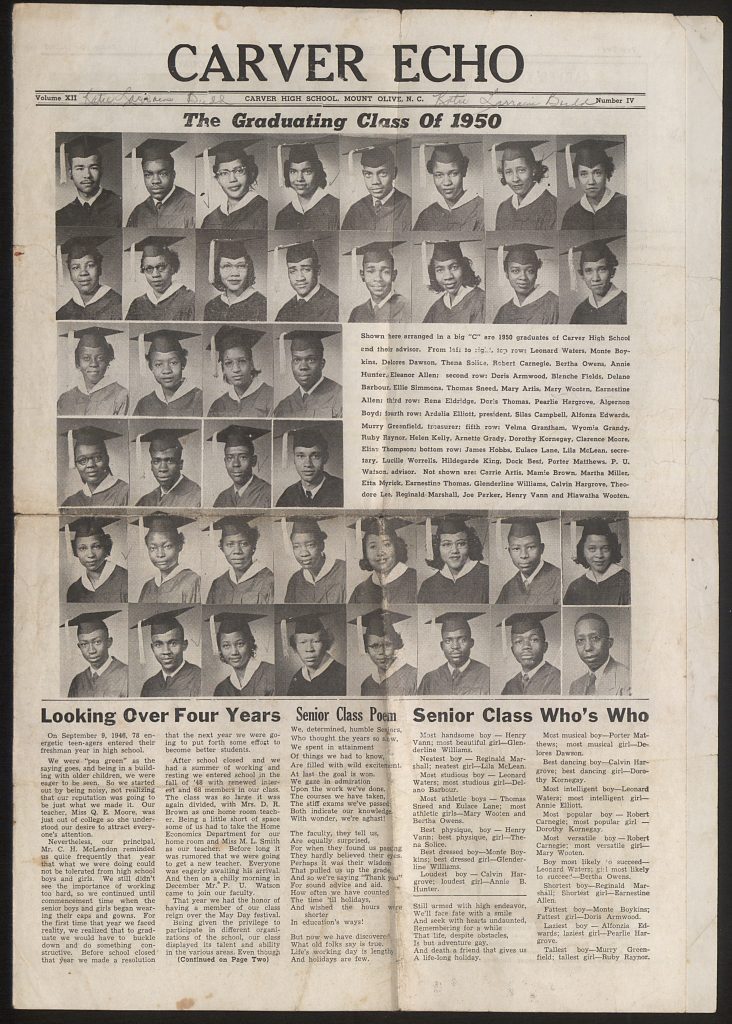
The only issue we have (so far) of a Carver High School newspaper. Mount Olive, NC, May 1950.
From our estimation, DigitalNC shares more digitized historical North Carolina African American newspapers than any other source. Contributors range from our state’s HBCUs to local libraries and museums. To help pull these titles together, we created an exhibit page through which you can search and browse eleven community papers and nine student papers. There are also links to more available on other sites.
Below we’ve re-posted the essay from the exhibit, giving you a brief history of these papers. We hope that we’ll hear from others who may be interested in sharing more of these rare resources online.
~~
Since the publication of Freedom’s Journal in 1827 in New York City, African American newspapers have had a long and impactful history in the United States. Begun as a platform to decry the treatment of enslaved people, the earliest African American newspapers appealed to whites, who were politically enfranchised. After the Civil War, as newly freed African Americans claimed the right to literacy, the number of African American newspapers around the country grew exponentially and the editors began addressing Black people instead of whites. Papers turned their focus from slavery to a variety of subjects: religion, politics, art, literature, and news as viewed through the eyes of African American reporters and readers. Communication about Black political and social struggles through Reconstruction and, later, the Civil Rights movement, cemented newspapers as integral to African American life.
In North Carolina, the first African American papers were religious publications. The North Carolina Christian Advocate, which appears to be the earliest, was published from 1855-1861 by the North Carolina Conference of the Methodist Episcopal Church, followed by the Episcopal Methodist, a shorter-lived publication produced during the Civil War by the same organization. After the Civil War, the number of African American newspapers continued to grow in North Carolina, reaching a peak during the 1880s and 1890s with more than 30 known titles beginning during that time.
The longest running African American paper established in North Carolina is the Star of Zion, originating in Charlotte in 1876 and still being produced today. Other long-running papers in the state include the Charlotte Post (begun 1890), The Carolina Times (Durham, begun 1919), the Carolinian (Raleigh, begun 1940), Carolina Peacemaker (Greensboro, begun 1967), and the Winston-Salem Chronicle (begun 1974). Many of these long running papers powerfully documented Black culture and opinion in North Carolina during the 1960s-1970s, with numerous editorials and original reporting of local and national civil rights news.
Occasionally overlooked sources for African American newspapers are North Carolina’s Historically Black Colleges and Universities (HBCU) and, before integration, African American high schools. You’ll find links on DigitalNC to newspapers from eight of North Carolina’s twelve current and historical HBCUs as well as two African American high schools.
While many African American newspapers have found their way into archives and libraries, it’s common to see broken runs and missing issues. You can find a great inventory of known papers from the UNC Libraries. If you work for a library, archive, or museum in North Carolina holding additional issues and would like to inquire about digitizing them and making them available online, please let us know.
This holiday season join us here on the blog for the 12 Days of NCDHC. We’ll be posting short entries that reveal something you may not know about us. You can view all of the posts together by clicking on the 12daysofncdhc tag. And, as always, chat with us if you have questions or want to work with us on something new. Happy Holidays!
Day 3: We’ll Come to You
In 2017 we introduced a new initiative – DigitalNC on the Road! in which we pack up our scanners and laptops and travel to partners to scan items in their collections. One of our favorite parts of being part of the NCDHC is getting to see our partners’ institutions (and get in a little NC sightseeing and tasting too!)
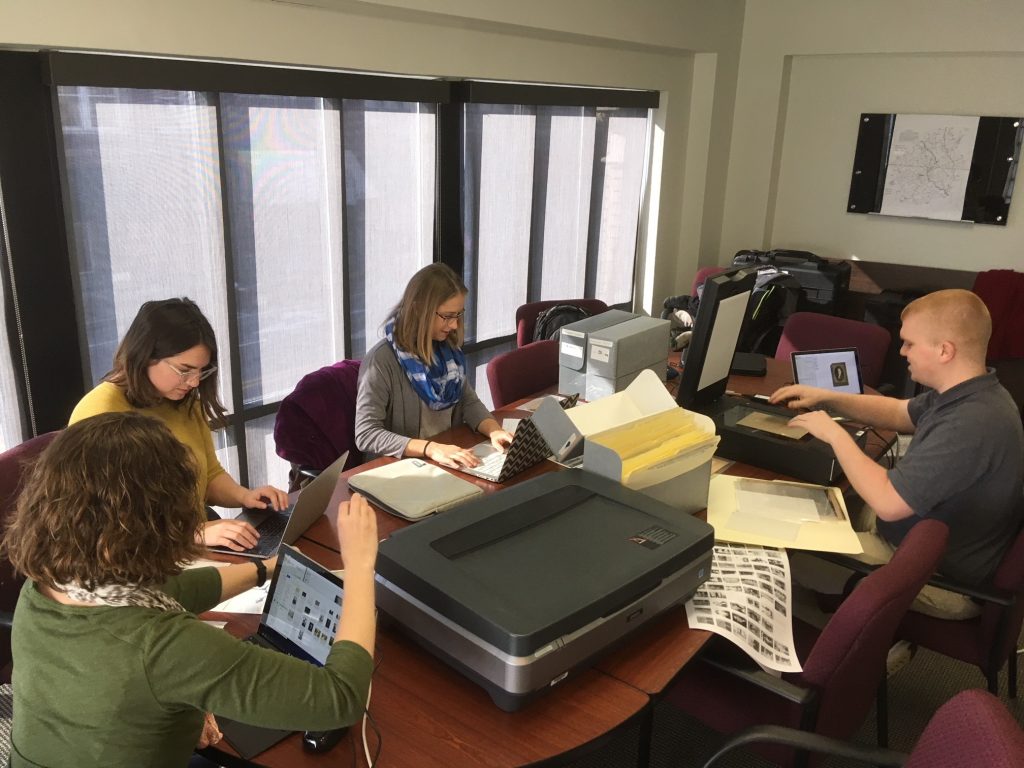
NCDHC staff scanning at Johnston County Heritage Center
Several partners so far have taken us up on the offer including City or Raleigh Museum, Johnston County Heritage Center, Winston Salem African American Archive, Gaston County Public Library and Graham County Public Library.
The length of time we will come for is flexible. Some partners we just visit for a day, other partners we come to for two or three days to really work through a collection. The process to visit starts at least a month beforehand where we meet with you via the phone to discuss what collections we can work on, how many materials we can get through, and discuss initial metadata needs. As far as resources needed once we arrive – a few tables and chairs and outlets near those tables is really it. We have been in community rooms, board rooms, and research rooms for our scanning setups! We welcome the public to view us and ask us any questions they might have. Our blog post announcing the initiative gives a good overview of how the process works. We have done photograph collections, news clippings, student history projects, and slides as part of our on site visits. Starting in January however we’ll have new scanners that will also allow us to easily do bound materials, including yearbooks.
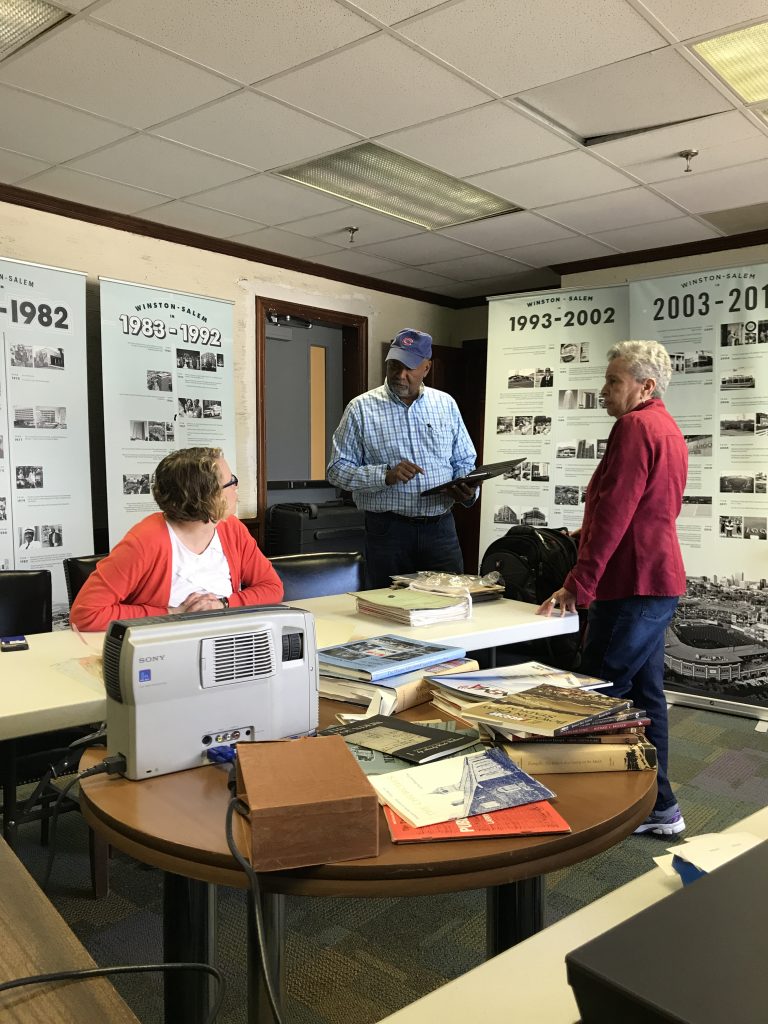
Lisa chatting with board members from the Winston Salem African American Archive
We are also happy to come visit and just talk through the collections you have and what might be candidates for digitization back at NCDHC in Wilson Library, and if you’re ready, take some of those materials back for us.
If you’re interested in talking with us to set up an on site visit let us know. We’re always up for a road trip across North Carolina!
Check back on Wednesday as we reveal Day 4 of the 12 Days of NCDHC!
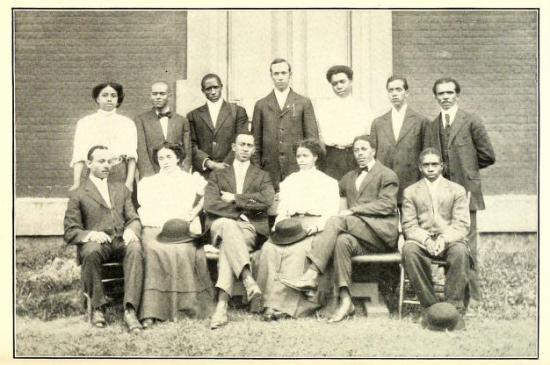
Students at Shaw University, 1911.
With the recent addition of student yearbooks from Livingstone College, DigitalNC now hosts historic materials from ten different Historically Black Colleges and Universities in North Carolina. These materials document more than a century of African American higher education in North Carolina. From our earliest projects in 2010 to the present, the North Carolina Digital Heritage Center has worked closely with libraries and archives at historically Black colleges around the state, and we continue to add materials from these collections on a regular basis. Follow the links below to browse yearbooks, newspapers, photos, scrapbooks, and more materials by school.
Bennett College (Greensboro)
Elizabeth City State University
Fayetteville State University
Johnson C. Smith University (Charlotte)
Livingstone College (Salisbury)
North Carolina A&T (Greensboro)
North Carolina Central University (Durham)
Saint Augustine’s University (Raleigh)
Shaw University (Raleigh)
Winston-Salem State University
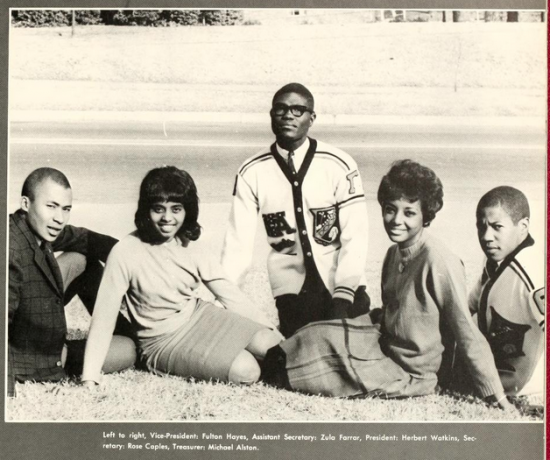
Sophomore class officers at North Carolina Central University, 1963.











